What is a Quadrilateral
A closed figure bounded by four line segments is called a quadrilateral.
 All closed figures shown in figure are quadrilaterals as all of them have four line segments. A quadrilateral has four sides, four vertices, and four angles. Let us consider a quadrilateral PQRS.
All closed figures shown in figure are quadrilaterals as all of them have four line segments. A quadrilateral has four sides, four vertices, and four angles. Let us consider a quadrilateral PQRS.

- Sides of the quadrilateral PQRS are PQ, QR, RS, SP, or QP, PS, SR, RQ.
- Angles of the quadrilateral PQRS are ∠P, ∠Q, ∠R, ∠S or ∠SPQ, ∠PQR, ∠QRS, ∠RSP.
- Vertices of quadrilateral PQRS are P, Q, R, and S.
Read More:
- Quadrilateral Family
- Different Kinds of Quadrilateral
- More Solved examples on Quadrilaterals
- Convex and Concave Quadrilaterals
- RS Aggarwal Class 9 Solutions Quadrilaterals and Parallelograms
- Properties of Cyclic Quadrilaterals
In addition to the above mentioned features, a quadrilateral also has two diagonals. The line segments joining the opposite vertices of a quadrilateral are called its diagonals. So, PR and QS are diagonals of quadrilateral PQRS that divide the quadrilateral into four triangles.

Adjacent sides
In quadrilateral PQRS, the two sides PQ and QR having a common end point Q, are called adjacent sides. Similarly, QR and RS, RS and SP, SP and PQ are adjacent to each other.
 Opposite sides
Opposite sides
The sides PQ and RS, PS and QR are opposite to each other. They are the opposite sides.
They do not have any common point.
Adjacent angles
Two angles of a quadrilateral that have a common arm are called adjacent angles.
In quadrilateral PQRS
∠P and ∠S, ∠P and ∠Q, ∠Q and ∠R, ∠R and ∠S are pairs of adjacent angles.
Opposite angles
Two angles of a quadrilateral that have no common arm are called opposite angles.
In quadrilateral PQRS, ∠P and ∠R, and ∠Q and ∠S are pairs of opposite angles.
Types of Quadrilaterals:
Quadrilaterals are classified as the following, depending upon their sides.
- Parallelogram
- Rhombus
- Rectangle
- Square
- Trapezium
- Isosceles Trapezium
- Kite

https://www.youtube.com/watch?v=dClELYwm8Nc
Interior and exterior of a quadrilateral
A quadrilateral divides a plane into three parts:
- Interior region: The region inside the quadrilateral is called the interior of the quadrilateral.
 Points A, B, and C are in the interior of the quadrilateral PQRS.
Points A, B, and C are in the interior of the quadrilateral PQRS. - On the quadrilateral: The points M and N which lie on the boundary are said to be on the quadrilateral.
- Exterior region: The region outside the quadrilateral is called the exterior of the quadrilateral. Points U and T are in the exterior of the quadrilaterals.
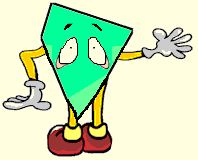
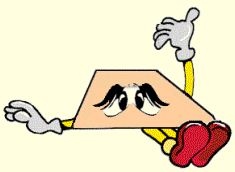
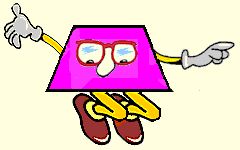
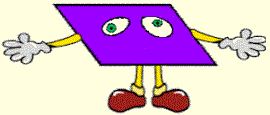
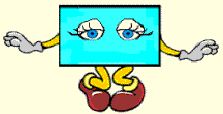
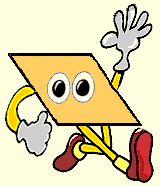
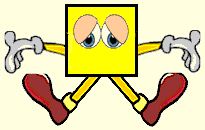
 In a convex quadrilateral each angle measures less than 180°.
In a convex quadrilateral each angle measures less than 180°. That is, any line segment that joins two interior points goes outside the figure. In a concave quadrilateral at least one angle is a reflex angle, i.e., an angle larger than 180°. In figure, ABCD is a concave quadrilateral because a line joining the vertices A and C is going outside the quadrilateral region.
That is, any line segment that joins two interior points goes outside the figure. In a concave quadrilateral at least one angle is a reflex angle, i.e., an angle larger than 180°. In figure, ABCD is a concave quadrilateral because a line joining the vertices A and C is going outside the quadrilateral region.